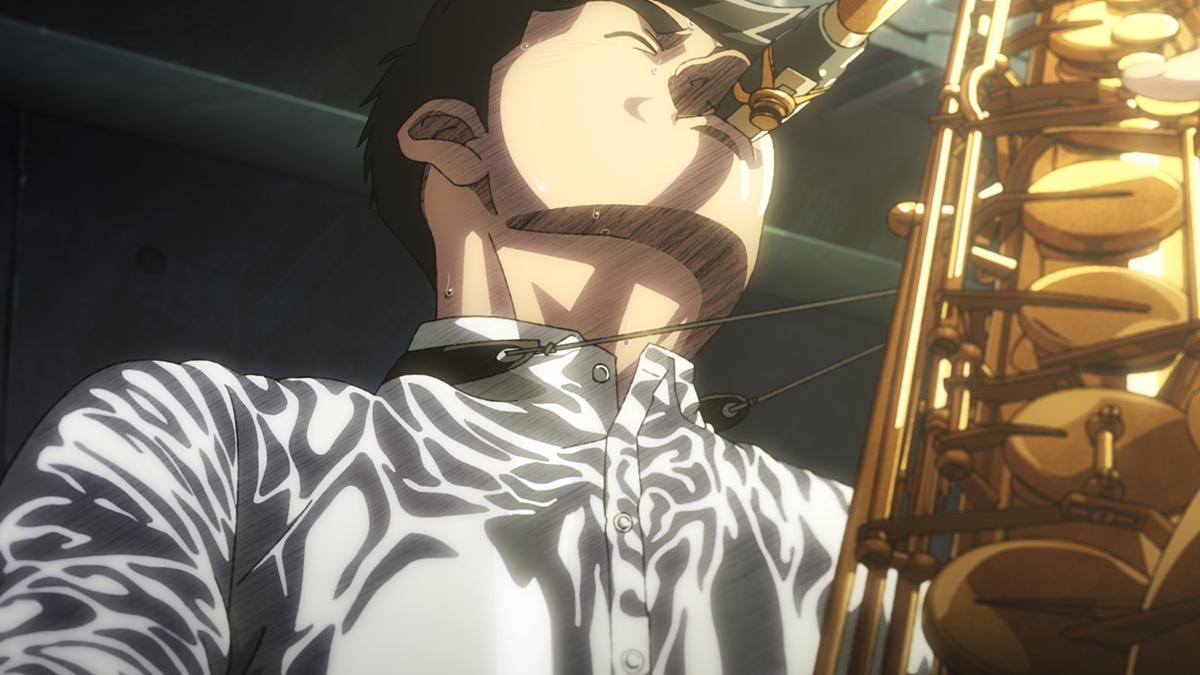
‘Blue Giant’ movie review: An ethereal, synaesthetic love letter to jazz like no other
The Hindu
‘Blue Giant’ is an electrifying anime ode to jazz, blending stunning animation with a soul-stirring musical journey
A decade ago, J.K. Simmons drove Miles Teller to the brink of musical transcendence in the climactic final sequence of Damien Chazelle’s Oscar-winning debut feature. Where Whiplash reignited a cultural flame for jazz, Blue Giant’s explosive ode to the genre, cues itself in rediscovering the allure of jazz’s rebellious, soul-stirring spirit of a genre in decline.
Directed by Yuzuru Tachikawa, renowned for his work on the anime series Mob Psycho 100, Blue Giant adapts Shinichi Ishizuka’s eponymous manga into a visually and aurally-arresting experience. The film’s exhilarating animation and irresistible jazz score by the extraordinary Hiromi Uehara weaves a tale of dreams, music, and human connection with an artistry that transcends the screen.
The story treads familiar ground — a small-town teen striving to make it big in the city — but it does so with a freshness and intensity that keeps it far from cliché. The protagonist, Dai Miyamoto (voiced by Yuki Yamada), leaves his hometown, saxophone in tow, with a burning passion for jazz and a dream to become one of the greats. In Tokyo, he encounters Yukinori Sawabe (Shôtarô Mamiya), a talented yet cynical pianist who is disillusioned by the waning interest in jazz. Their dynamic is electrifying, with Dai’s raw enthusiasm clashing against Yukinori’s seasoned skepticism, yet ultimately harmonising into something profound and beautiful.
Rounding out their trio is Shunji Tamada (Amane Okayama), a complete drumming novice whose boundless enthusiasm compensates for his initial lack of skill. Their chemistry crackles with tension and mutual respect, setting the stage for a partnership that’s as tempestuous as it is inspiring. Together, they form Jass; a name chosen by a happy accident, but embodying their earnest, if somewhat naive, ambition.
Blue Giant excels in portraying the transformative power of music. For Dai, jazz is a spiritual experience, a conduit to euphoria. Yukinori, on the other hand, grapples with his fear of improvisation and his desire for perfection, reflecting a deeper internal struggle. Shunji’s journey is one of self-discovery, as he learns to sync his newfound passion with his bandmates’ prowess. Each character’s arc is deeply intertwined with their musical evolution, making their performances not just displays of talent, but expressions of their innermost selves.
When Jass is in full swing, Blue Giant offers a sensory experience that is nothing short of rhapsodic, delivering a spectacle of symphony that would give the Spider-Verse a run for its money. The 3D animation, capturing the fluid movements of the musicians, interweaves seamlessly with hand-drawn elements in a remarkably synaesthetic experience. These scenes are not mere accompaniments to the music but rather extensions of it, with the animation bending and warping to reflect how jazz pivots on spontaneity, creating a tête-à-tête between sight and sound that is as breathtaking as it is unparalleled.
Yet, Blue Giant is not without its quieter, more intimate moments. The film doesn’t forget to narrow down on the personal struggles and aspirations of its characters, grounding their larger-than-life musical ambitions with an aspiring musician’s most formidable hurdle: making a living. These moments of introspection provide a necessary counterbalance to the high-octane performances.

ACB files case against IPS officer N. Sanjay in Andhra Pradesh. The official is accused of manipulating the tender processes for awarding contract for development and maintenance of AGNI-NOC portal, and conducting awareness meetings for SC/STs. It is alleged that the total value of properties stolen, or involved in the case is estimated at ₹1,75,86,600.










